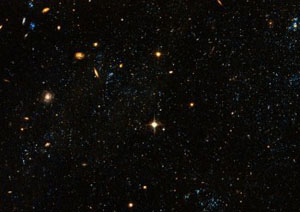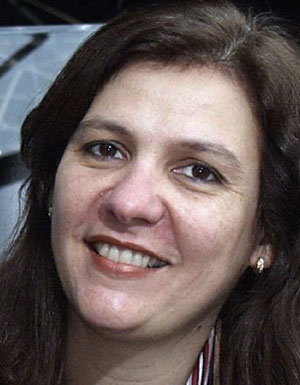Astronomical news almost invariably focuses on unusually shaped objects, pretty nebulae that resemble earthly creatures, spitting jets from supernovae. However, odd blue blobs that mark the crash site of a galactic collision that occurred 200 million years ago could provide us with much more than a pretty picture, pointing to the origins of stars in the early Universe.
Duilia de Mello of the Catholic University of America, Washington, DC and NASA’s Goddard Space Flight Center, Greenbelt, Maryland and her colleagues reported details of the first detailed observations of blue blobs at the 211th meeting of the American Astronomical Society in Austin, Texas. The Hubble Space Telescope has resolved these blue blobs into brilliant clusters of stars forming in the swirls and eddies of a galactic smashup in the Galaxy Group M81/M82.

Blue Blobs in Galaxy Group M81/M82 (Credit: NASA, ESA, and D. de Mello (The Catholic University of America and GSFC)
The blue blobs are a bit more substantial than they sound, de Mello explains, they weigh tens of thousands of solar masses. Moreover, they are more massive than most open clusters found within galaxies. However, they weigh but a fraction of the mass of globular star clusters that orbit galaxies.
De Mello adds that intergalactic blue blobs are also more important than their name might suggest. The orphan stars that make up the blue blobs do not belong to any particular galaxy and so the heavier chemical elements produced in their fusion furnaces are readily expelled back into intergalactic space. This, she and her colleagues suggest, could offer new clues as to how heavy chemical elements polluted the early Universe.

Duilia de Mello
The blue blobs sit clumped together in a structure called Arp’s Loop, on a wispy bridge of gas strung among three colliding galaxies, M81, M82, and NGC 3077. They lie some 12 million light-years from Earth. Such a location is not one in which astronomers expected to find star clusters. We could not believe it, the stars were in the middle of nowhere, says de Mello, or more technically, they lie in the abyssal plain of intergalactic space.
Initially, these gas filaments were thought to be too thin to build up adequate material for stars to coalesce, adds de Mello, despite astronomical theorising, Hubble, however, reveals that rather than being inadequate blue blobs the region contains five times as much matter as one of the most famous star nurseries, the Orion Nebulae.
De Mello and her team propose that the star clusters in this diffuse structure may have formed from gas collisions and subsequent turbulence, enhanced by the galactic collision. Similar collisions are thought to have been a lot more frequent in the early Universe, so blue blobs may have been quite common then.
Further reading
Dr Duilia F. de Mello homepage
http://iacs.cua.edu/people/demello/duilia.cfm
The Hubble Heritage Project homepage
http://heritage.stsci.edu/2008/02
NASA Hubble Space Telescope
http://www.nasa.gov/hubble